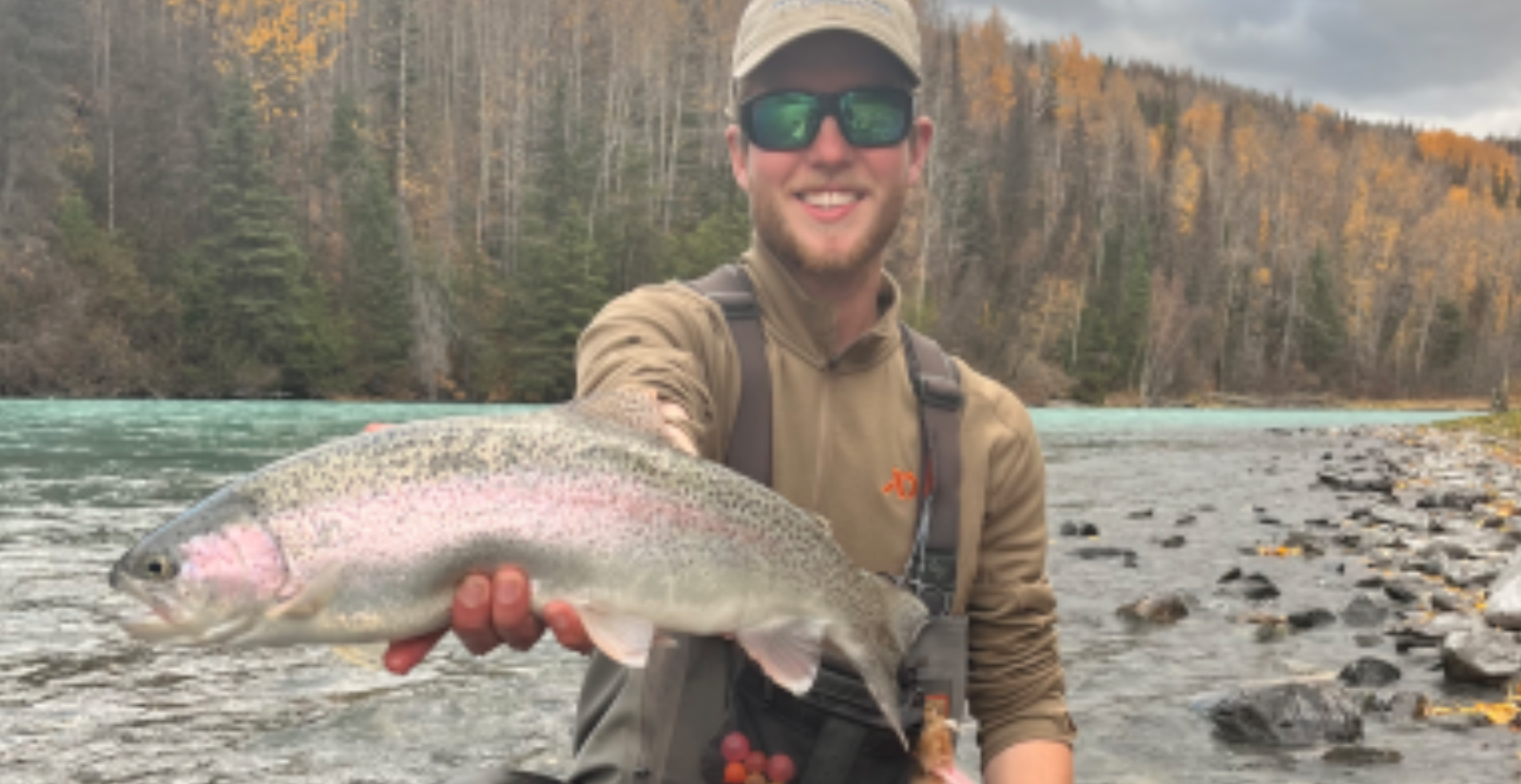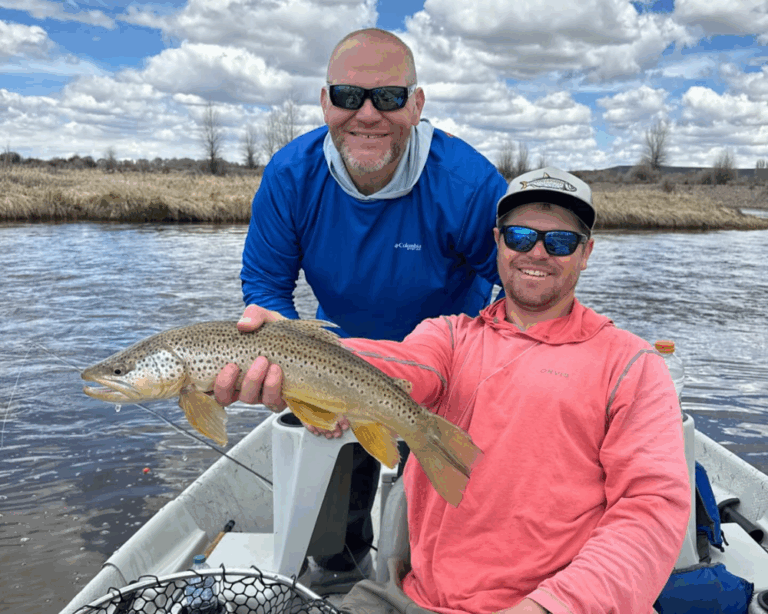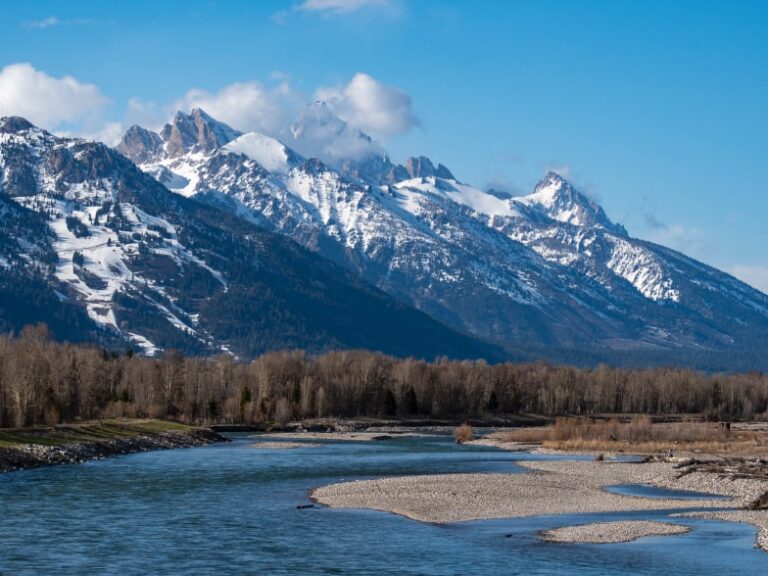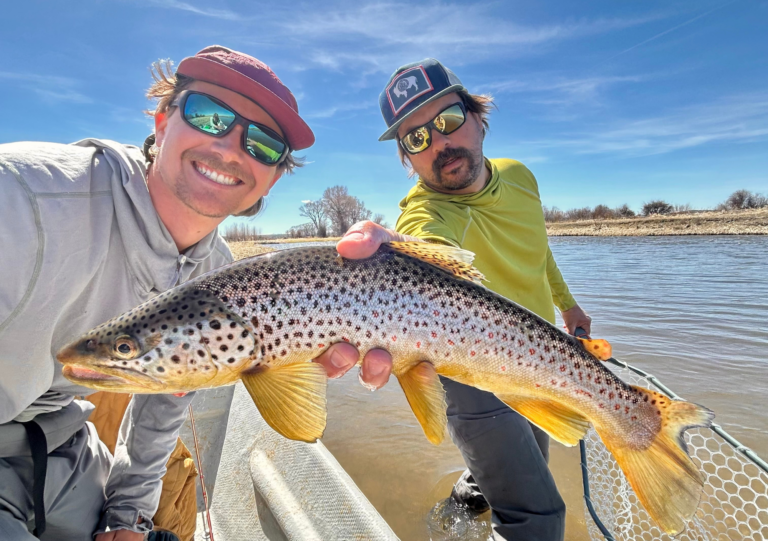Before getting into best practices and tips on how to catch big trout, it is important to define what a big trout is. The size of a fish depends on the food source available in the river. Smaller streams generally have less food (bugs) so the fish are not as large, compared to a bigger river. The type of river also affects the size of the fish. The Snake River in Jackson Hole, for example, tends to change course each season with the movement of large gravel islands due to snowmelt. This movement can crush bug life, making less food available, hence “smaller” trout compared to the same river that flows in Idaho. Large trout on the Snake River are 18-20 inches in length.
The South Fork of the Snake River (Idaho) does not tend to change course as much, meaning more prolific bug life and bigger fish. These fish are harder to catch, but the Brown Trout reach up to 28” in length, and Cutthroat trout up to 32” in length. With this in mind, consider what size of trout you are seeking to avoid disappointment. However, in our eyes, trout of any size is not cause for disappointment and rather an opportunity for the next catch!
Now that we have defined size, here are some tips on how to catch big trout:
- Choose the Right Location: Wyoming has many great rivers and streams for fly fishing. Some of the most popular include the Snake River, the North Platte River, and the Green River. Any one of these rivers will hold big Wyoming trout. Learn more about the best fly fishing in Wyoming spots in our blog!
- Use the Correct Flies: Big trout are often selective eaters. Research the hatch patterns in the area you’ll be fishing and choose a fly that matches those bugs. If you are not sure what the trout are eating, you can always try a streamer or a set of jighead nymphs like the Perdigon.
- Fish During the Right Time of Day: Big trout are often more active during certain times of the day. Early morning or late evening are typically good times when you don’t know the hatches. On the Snake River, the fishing can be good mid-day when the water temps warm up enough for a hatch of various types of mayflies.
- Expensive vs Inexpensive Gear: You don’t necessarily need the most expensive gear unless you are using small tippets. To protect a small-sized monofilament line when a large trout makes its initial run, a nice reel will initiate the drag system quicker than a cheaper one. So, if you do have less expensive gear, using tippet sizes bigger than 5x is advised.
- Read the River: Big trout tend to be in difficult spots to cast. Look for overhanging vegetation, undercut banks, and side channels that see less pressure than the main river. Large trout often want a large meal. A bigger dry fly, like a Water Walker, will bring a big fish off of the bottom. Big Wyoming trout can be spooked easily, so approach the water quietly and avoid making sudden movements.
- Practice Catch and Release: It’s important to preserve the population of trout, so catch and release is recommended. Use a net and handle the fish carefully to avoid injuring them. Face the big trout upstream in a small amount of current and let it revive and kick off on its own. Fishing past temperatures of 65 degrees can kill trout so make sure to check the forecast before your trip.
In the end, just have fun! Most anglers you talk to will tell you that it is not always about the fish caught and often more about spending time outside. If you do stumble upon that big fish, that is the icing on the cake! Give us a call for any questions about Jackson Hole fly fishing and catching big trout.




